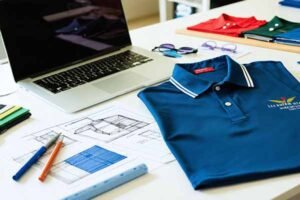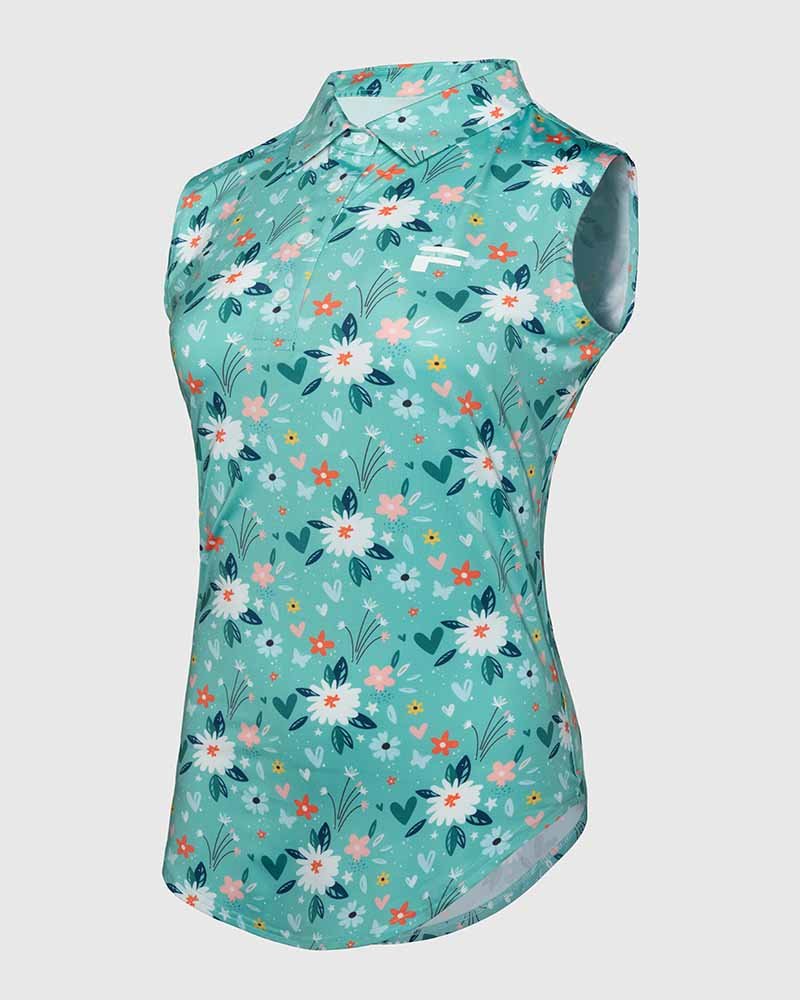
Choosing the right golf clothing manufacturer is essential for your brand's success. It ensures you deliver quality products that your customers will love and trust. Let’s dive into how you can effectively assess a manufacturer’s production capacity and quality.
Assessing a golf clothing manufacturer’s production capacity and quality involves evaluating their ability to meet your order demands, the quality of their materials and craftsmanship, and their reliability in delivering on time. By thoroughly examining these aspects, you can ensure a successful partnership that aligns with your brand’s standards and goals.
Navigating the world of golf apparel manufacturing can be tricky, but understanding these key factors will set you on the right path.
Request Samples for Quality Evaluation
Before committing to a manufacturer, it's crucial to evaluate the quality of their products firsthand.
Requesting samples allows you to assess the material, craftsmanship, and overall durability of the golf apparel. This step is vital to ensure that the products meet your brand’s standards and will satisfy your customers.

Requesting samples is more than just a formality; it's your first tangible interaction with the manufacturer’s capabilities. Here's how to make the most of this step:
1. Material Inspection
Start by examining the fabric quality. Look for:
- Durability: The material should withstand regular wear and tear.
- Comfort: Ensure the fabric feels good against the skin and allows for easy movement.
- Performance Features: Check for breathability, moisture-wicking properties, and stretchability.
| Aspect | What to Look For |
|---|---|
| Durability | Strong seams, resistance to fraying and pilling |
| Comfort | Soft texture, appropriate weight for the climate |
| Performance Features | Breathable fabrics, effective moisture-wicking technology |
2. Craftsmanship Evaluation
Pay attention to the stitching and overall construction:
- Stitching: Should be even, tight, and free from loose threads.
- Seams: Should lie flat and not create discomfort during movement.
- Finishing: Look for neat edges and absence of defects.
3. Fit and Flexibility Testing
Wear the samples to assess:
- Fit: Ensure the apparel fits well and aligns with your brand’s sizing standards.
- Flexibility: Test the range of motion to confirm the apparel supports active movement on the golf course.
By thoroughly evaluating these aspects, you can make an informed decision about whether the manufacturer can deliver the quality your brand promises.
Inquire About Production Equipment and Technology
Understanding the manufacturer’s equipment and technology is key to ensuring they can produce high-quality golf apparel efficiently.
Inquiring about production equipment and technology helps you gauge the manufacturer’s ability to deliver precise and consistent products. Advanced machinery and up-to-date technology often translate to better quality and faster production times.

When assessing production equipment and technology, consider the following:
1. Modern Machinery
Modern equipment can enhance precision and efficiency:
- Automated Cutting Machines: Ensure accurate fabric cutting, reducing material waste.
- High-Speed Sewing Machines: Allow for faster production without compromising quality.
2. Customization Tools
Check the technology used for custom designs:
- Embroidery Machines: For detailed logo and pattern work.
- Screen Printing Equipment: For vibrant and durable prints.
- Heat Transfer Technology: For complex designs and multiple color layers.
3. Sustainability Practices
Modern technology often includes eco-friendly options:
- Energy-Efficient Machines: Reduce environmental impact.
- Water Recycling Systems: Minimize water usage in production processes.
| Technology Aspect | Benefits |
|---|---|
| Automated Cutting | Precision, reduced waste |
| High-Speed Sewing | Increased production rate, consistent quality |
| Embroidery Machines | Detailed and durable custom designs |
| Screen Printing | Vibrant, long-lasting prints |
| Heat Transfer | Versatile design capabilities |
| Sustainability Tools | Eco-friendly production, reduced resource use |
By understanding the manufacturer’s technological capabilities, you can ensure they are equipped to meet your design and production needs effectively.
Understand Production Capacity
Knowing a manufacturer’s production capacity ensures they can handle your order volume and scale with your business growth.
Understanding production capacity involves assessing the maximum and minimum order quantities a manufacturer can handle, their lead times, and their ability to scale production as your brand grows. This ensures they can meet your demands without compromising on quality or timelines.
To effectively gauge a manufacturer’s production capacity, focus on these key areas:
1. Order Volume Flexibility
Determine the range of order sizes they can manage:
- Minimum Order Quantity (MOQ): Ensure it aligns with your initial budget and inventory needs.
- Maximum Order Capacity: Confirm they can handle large orders during peak seasons or as your brand expands.
2. Lead Time Management
Assess how quickly they can fulfill orders:
- Standard Lead Times: Understand their usual production and delivery timelines.
- Urgent Orders: Check if they offer expedited services for urgent needs.
3. Scalability Potential
Ensure the manufacturer can grow with your business:
- Expansion Capabilities: Their ability to increase production without sacrificing quality.
- Resource Availability: Access to additional materials and workforce during high-demand periods.
| Capacity Aspect | Considerations |
|---|---|
| MOQ | Aligns with budget and inventory requirements |
| Maximum Capacity | Ability to handle large-scale orders |
| Lead Times | Standard and expedited production timelines |
| Scalability | Capacity to increase production as needed |
| Resource Availability | Access to materials and workforce for scaling |
By thoroughly understanding the manufacturer’s production capacity, you can ensure they are a reliable partner capable of supporting your brand’s growth and demand fluctuations.
Check Certifications and Compliance
Ensuring that a manufacturer meets industry standards and compliance is crucial for maintaining quality and ethical practices.
Checking certifications and compliance involves verifying that the manufacturer adheres to recognized industry standards and ethical practices. Certifications like ISO, OEKO-TEX, or WRAP indicate a commitment to quality and responsible manufacturing.
Delving into certifications and compliance helps you ensure that the manufacturer upholds high standards:
1. Industry Standards Certifications
Look for recognized certifications that signify quality:
- ISO Certification: Demonstrates adherence to international quality management standards.
- OEKO-TEX: Ensures textiles are free from harmful substances.
- WRAP (Worldwide Responsible Accredited Production): Indicates ethical manufacturing practices.
2. Safety Compliance
Ensure the manufacturer complies with safety regulations:
- Local and International Laws: Compliance with regulations in the countries they operate and where you intend to sell your products.
- Product Safety Standards: Adherence to safety standards specific to apparel manufacturing.
3. Workplace Practices
Assess their commitment to ethical labor practices:
- Fair Labor Standards: Compliance with labor laws regarding wages, working hours, and conditions.
- Ethical Sourcing: Responsible sourcing of materials to prevent exploitation and environmental harm.
| Certification Type | Purpose |
|---|---|
| ISO | Quality management and continuous improvement |
| OEKO-TEX | Safety and non-toxicity of textiles |
| WRAP | Ethical manufacturing and responsible production |
| Local Laws | Compliance with regional labor and safety laws |
| International Regulations | Adherence to global apparel safety standards |
Verifying these certifications and compliance measures ensures that your products are manufactured responsibly and meet the highest quality standards, protecting your brand’s reputation.
Review Quality Control Processes
Robust quality control processes are essential to maintain the consistency and reliability of your golf apparel.
Reviewing quality control processes involves understanding how the manufacturer inspects and maintains product quality at every stage of production. Effective quality control ensures that each garment meets your brand’s standards before it reaches your customers.

Effective quality control is the backbone of high-quality apparel manufacturing. Here’s what to look for:
1. Inspection Stages
Understand the different points at which quality checks are performed:
- Raw Material Inspection: Ensures that fabrics and materials meet quality standards before production begins.
- In-Process Inspection: Continuous monitoring during production to catch defects early.
- Final Inspection: Comprehensive check before products are packaged and shipped.
2. Defect Rate Management
Evaluate how the manufacturer handles defects:
- Defect Rates: Request data on their defect rates to assess reliability.
- Corrective Actions: Understand their process for addressing and reducing defects.
3. Testing Methods
Confirm the types of tests they perform to ensure product quality:
- Fabric Strength Tests: Assess the durability and longevity of materials.
- Colorfastness Tests: Ensure colors remain vibrant and do not fade or bleed.
- Performance Tests: Evaluate features like moisture-wicking and breathability under real-world conditions.
| Quality Control Aspect | Details |
|---|---|
| Inspection Stages | Raw material, in-process, and final inspections |
| Defect Rate Management | Tracking defect rates and implementing corrective actions |
| Testing Methods | Fabric strength, colorfastness, performance testing |
By thoroughly reviewing these quality control processes, you can ensure that the manufacturer consistently delivers high-quality products that align with your brand’s standards.
Visit the Factory (if possible)
Visiting the manufacturer’s factory provides firsthand insight into their operations and capabilities.
Visiting the factory allows you to observe the manufacturing process, assess the working conditions, and build a stronger relationship with the supplier. It ensures transparency and helps verify that the manufacturer can meet your quality and production standards.
A factory visit can reveal a lot about a manufacturer’s capabilities and reliability. Here’s what to focus on:
1. Operational Efficiency
Observe how the factory operates:
- Workflow Organization: Efficiently organized processes indicate good management.
- Equipment Maintenance: Well-maintained machinery reflects a commitment to quality and productivity.
2. Facility Conditions
Assess the overall environment:
- Cleanliness and Safety: A clean and safe workspace is a sign of professionalism and care.
- Storage Practices: Proper storage of materials and finished products prevents damage and ensures quality.
3. Team Expertise
Interact with the staff to gauge their expertise:
- Skilled Workforce: Experienced and trained employees contribute to higher quality production.
- Management Practices: Effective leadership can influence the overall performance and quality of the manufacturing process.
4. Sustainability Practices
Look for environmentally responsible practices:
- Waste Management: Efficient handling and disposal of waste materials.
- Energy Usage: Implementation of energy-saving technologies and practices.
| Factory Visit Focus | What to Look For |
|---|---|
| Operational Efficiency | Organized workflow, well-maintained machinery |
| Facility Conditions | Clean, safe environment, proper storage |
| Team Expertise | Skilled workforce, effective management |
| Sustainability Practices | Waste management, energy-efficient operations |
Visiting the factory not only helps you verify the manufacturer’s claims but also builds trust and fosters a collaborative relationship, essential for long-term success.
Ask for Client References
Client references provide valuable insights into the manufacturer’s reliability and quality from a customer’s perspective.
Asking for client references allows you to hear firsthand experiences from other brands that have worked with the manufacturer. This feedback can highlight strengths and potential weaknesses, helping you make a more informed decision.
1. Existing Client Insights
Reach out to current or past clients:
- Performance Feedback: Learn about their satisfaction with the manufacturer’s products and services.
- Reliability: Understand how the manufacturer handles deadlines and order changes.
2. Product Range and Expertise
Ensure the manufacturer has relevant experience:
- Golf Apparel Specialization: Confirm that they have a solid track record in producing golf clothing.
- Diverse Product Portfolio: A varied product range indicates versatility and expertise.
3. Customer Service Quality
Assess the level of support you can expect:
- Communication Effectiveness: Efficient and clear communication is crucial for smooth operations.
- Problem-Solving Ability: Gauge how proactively the manufacturer addresses issues and resolves conflicts.
4. Long-Term Relationships
Determine their ability to support your growth:
- Repeat Business: High rates of repeat clients suggest satisfaction and reliability.
- Scalability Support: Their willingness to grow alongside your brand indicates a strong partnership potential.
| Reference Aspect | What to Inquire About |
|---|---|
| Performance Feedback | Product quality, adherence to deadlines |
| Reliability | Consistency in fulfilling orders |
| Customer Service | Communication clarity, responsiveness |
| Long-Term Support | Ability to scale, support for business growth |
By thoroughly vetting client references, you gain a clearer picture of what to expect from the manufacturer, ensuring they are a trustworthy and capable partner for your golf apparel brand.
Assess Communication and Responsiveness
Effective communication is vital for a smooth and successful partnership with your manufacturer.
Assessing communication and responsiveness ensures that the manufacturer is approachable, transparent, and proactive in addressing your needs and concerns. Good communication fosters a collaborative relationship and minimizes misunderstandings.

Strong communication practices can make or break your partnership. Here’s how to evaluate them:
1. Transparency in Operations
Ensure the manufacturer is open about their processes:
- Detailed Information Sharing: They should willingly provide information about production timelines, challenges, and updates.
- Honest Discussions: Transparency about limitations and potential issues builds trust.
2. Responsiveness to Inquiries
Timely responses indicate reliability:
- Quick Turnaround: Prompt replies to emails and calls show that they value your business.
- Availability: Availability during your business hours ensures you can reach them when needed.
3. Problem Resolution Approach
Effective handling of issues is crucial:
- Proactive Solutions: They should take initiative in addressing problems without waiting for you to point them out.
- Flexibility: Willingness to adapt and find mutually beneficial solutions when challenges arise.
4. Regular Updates
Stay informed about your orders:
- Progress Reports: Regular updates on the status of your orders keep you in the loop.
- Milestone Notifications: Alerts when key stages of production are completed ensure transparency.
| Communication Aspect | Indicators of Good Communication |
|---|---|
| Transparency | Open about processes and challenges |
| Responsiveness | Quick replies and availability |
| Problem Resolution | Proactive and flexible in addressing issues |
| Regular Updates | Consistent progress reports and milestone notifications |
By assessing these communication factors, you can ensure a smooth and effective partnership, where your needs are met promptly and efficiently.
Conduct a Trial Run
A trial run helps you evaluate the manufacturer’s performance before committing to larger orders.
Conducting a trial run allows you to assess the manufacturer’s ability to deliver on quality, timeline, and communication. It serves as a practical test to ensure they can meet your expectations before scaling up your orders.
A trial run is your opportunity to test the waters. Here’s how to make it count:
1. Placing a Small Order
Start with a manageable order size:
- Limited Quantity: Choose a small batch to minimize risk while evaluating performance.
- Diverse Products: Include a variety of items to test different aspects of production.
2. Monitoring Production
Keep a close eye on the process:
- Timeliness: Ensure the order is completed within the agreed timeframe.
- Quality Consistency: Check if the products maintain consistent quality across the batch.
3. Evaluating Delivery
Assess the logistics:
- Packaging Quality: Products should be well-packaged to prevent damage during transit.
- Shipping Efficiency: Timely and reliable shipping methods are essential for customer satisfaction.
4. Gathering Feedback
Use the trial run to collect valuable insights:
- Internal Review: Have your team assess the products and the overall experience.
- Customer Feedback: Share samples with a select group of customers to gather their opinions.
| Trial Run Step | Key Actions |
|---|---|
| Small Order Placement | Limited quantity, diverse product range |
| Production Monitoring | Check timeliness and quality consistency |
| Delivery Evaluation | Assess packaging and shipping efficiency |
| Feedback Gathering | Internal and customer feedback on trial products |
A successful trial run builds confidence in the manufacturer’s capabilities and paves the way for a strong, long-term partnership.
Review Long-Term Viability
Ensuring the manufacturer is a viable long-term partner is crucial for sustained business growth.
Reviewing long-term viability involves assessing the manufacturer’s financial stability, commitment to innovation, and alignment with your brand’s future goals. A reliable partner will support your brand’s growth and adapt to changing market demands.
To evaluate long-term viability, consider these factors:
1. Financial Stability
A financially stable manufacturer is less likely to face disruptions:
- Consistent Growth: Look for signs of steady business expansion and profitability.
- Creditworthiness: Good financial health indicates reliability in fulfilling orders and investments in quality.
2. Commitment to Innovation
Innovative manufacturers stay ahead of market trends:
- Adoption of New Technologies: They invest in the latest machinery and production techniques.
- Product Development: Active in creating new designs and improving existing products to meet market demands.
3. Alignment with Brand Values
Shared values foster a harmonious partnership:
- Sustainability Goals: If your brand prioritizes eco-friendly practices, ensure the manufacturer does the same.
- Quality Standards: Both parties should have similar expectations regarding product quality and craftsmanship.
4. Scalability and Support
The ability to grow together is essential:
- Resource Availability: They should have the capacity to increase production as your brand expands.
- Supportive Partnership: A manufacturer that offers guidance and support can help navigate challenges and seize opportunities.
| Long-Term Viability Aspect | Evaluation Criteria |
|---|---|
| Financial Stability | Consistent growth, good creditworthiness |
| Commitment to Innovation | Use of new technologies, active product development |
| Alignment with Brand Values | Shared sustainability and quality standards |
| Scalability and Support | Capacity for growth, supportive partnership |
By thoroughly reviewing these aspects, you can ensure that your chosen manufacturer is not only capable today but will continue to support your brand’s success in the future.
Conclusion
Selecting the right golf clothing manufacturer is a blend of thorough research, practical evaluation, and building a trustworthy relationship. By following these steps, you can ensure a successful partnership that brings your brand’s vision to life with quality and reliability.
Visit us at www.golfshirtsfactory.com and let FUWAY help you craft quality golf apparel for every swing.



















